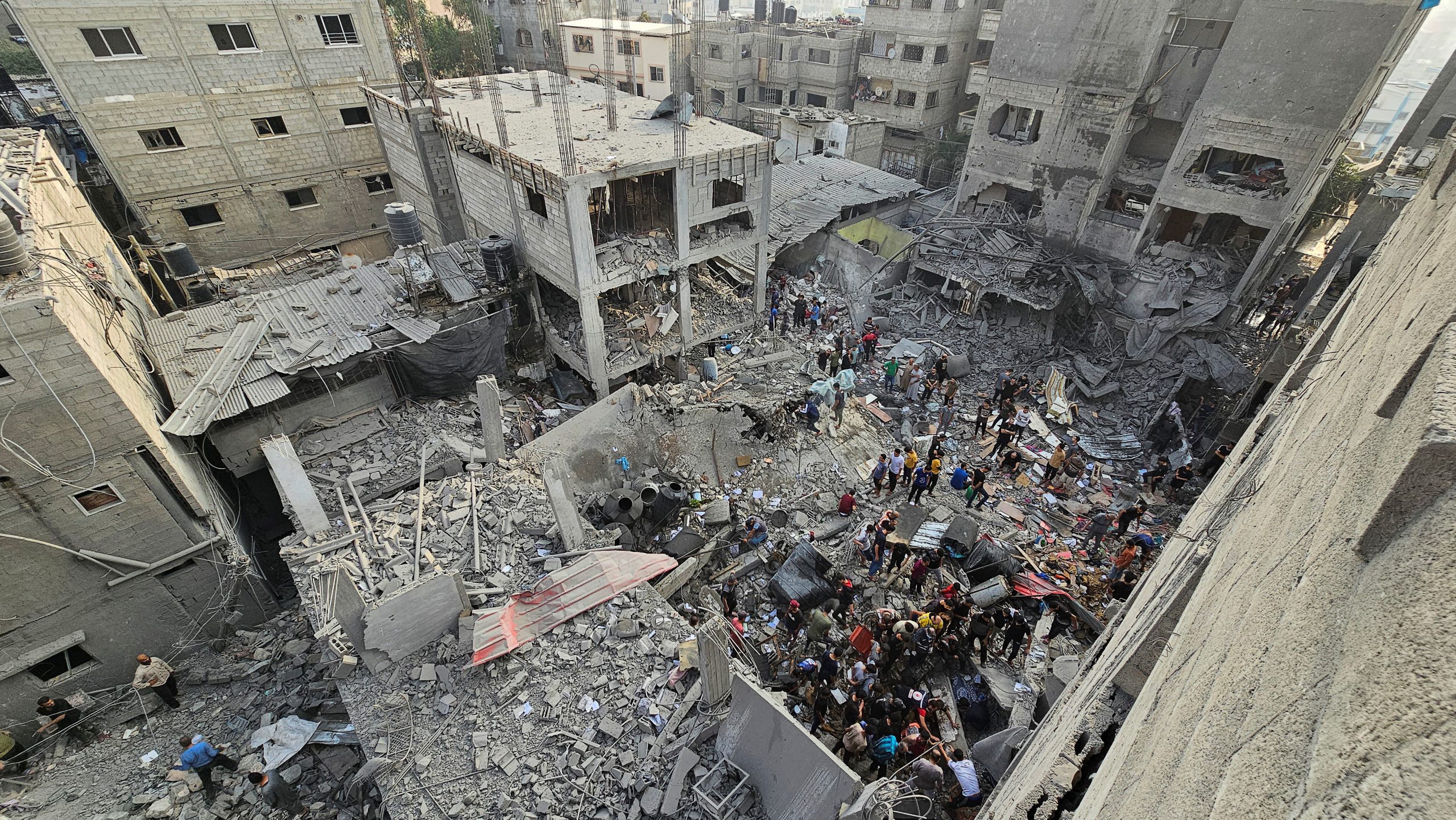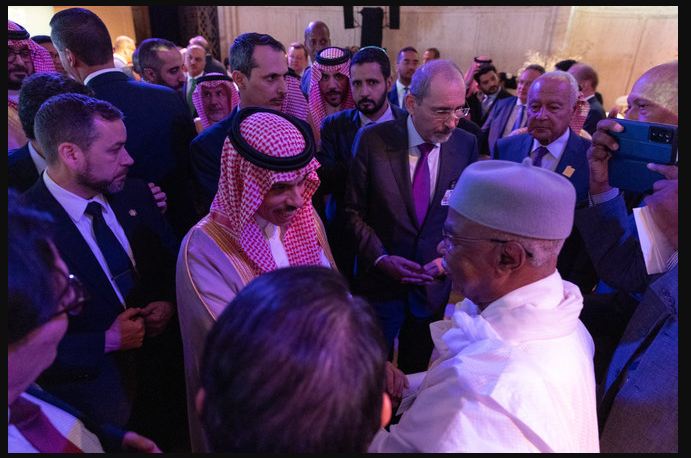Hamas fighters seek to block Israeli advance on Gaza City
Gaza/Jerusalem (Reuters) – Israeli tanks and troops pressed towards Gaza City on Thursday but met fierce resistance from Hamas militants using mortars and hit-and-run attacks from tunnels as the Palestinian death toll from nearly four weeks of bombardments mounted.
The war is closing in on the Gaza Strip’s main population centre in the north where Israel has vowed to annihilate the Islamist group’s command structure and told civilians to leave.
“We are at the gates of Gaza City,” said Israeli military commander Brigadier General Itzik Cohen.
Fighters of Hamas and its ally Islamic Jihad were emerging from tunnels to fire at tanks, then disappearing back into the network, residents said and videos from both groups showed, in guerrilla-style operations against a far more powerful army.
“They never stopped bombing Gaza City all night, the house never stopped shaking,” said one man living there, asking not to be identified by name. “But in the morning we discover the Israeli forces are still outside the city, in the outskirts and that means the resistance is heavier than they expected.”
Aware of the difficulties of fighting in an urban environment, Israeli officers’ strategy appears for now to be concentrating large forces in the northern Gaza Strip rather than launching a ground assault on the entire territory.
The latest war in the decades-old conflict began when Hamas fighters broke through the border on Oct. 7. Israel says they killed 1,400 people, mostly civilians, and took more than 200 hostages in the deadliest day of its 75-year history.
Israel’s ensuing bombardment of the small Palestinian enclave of 2.3 million people has killed at least 8,796 people, including 3,648 children, according to Gaza health authorities.
Though Western nations and the United States in particular have traditionally supported Israel, harrowing images of bodies in the rubble and hellish conditions inside Gaza have triggered appeals for restraint and street protests around the world.
Residents reported mortar fire around Gaza City and said Israeli tanks and bulldozers were sometimes driving over rubble and knocking down structures rather than using regular roads.
Destruction Across Gaza
Though Israel has told Gazans to go south, that part of their territory was not spared either. Three Palestinians died in tank shelling near the town of Khan Younis and an air strike killed five outside a U.N. school in Beach refugee camp, Gaza health officials said.
In central Gaza, an air strike destroyed clusters of houses in the Bureij refugee camp, residents and Gaza officials said, with 15 bodies pulled from the rubble. “A massacre, a massacre,” people cried as they gathered corpses in blankets.
Brigadier General Iddo Mizrahi, chief of Israel’s military engineers, said troops were in a first stage of opening access routes in Gaza but were encountering mines and booby-traps. “Hamas has learned and prepared itself well.”
With Secretary of State Antony Blinken again en route to the region after saying the U.S. and others were looking at options for Gaza’s future, Hamas blasted outside meddling.
“Our great Palestinian people and their valiant resistance will prevail over this fascist occupation,” it added, demanding an independent state.
After a total blockade of Gaza for more than three weeks, foreign passport-holders and some wounded were allowed out. Palestinian border official Wael Abu Mehsen said 400 foreign citizens would leave for Egypt via the Rafah crossing on Thursday, after some 320 on Wednesday.
Dozens of critically injured Palestinians were to cross too. Israel asked foreign countries to send hospital ships for them.
“I want to pass. We are not animals,” said Ghada el-Saka, an Egyptian at Rafah waiting to return home after visiting relatives. “We’ve seen death with our own eyes,” she added, describing a strike near her siblings’ house that had made her and her daughter live on the street.
Israel’s latest strikes have included the heavily populated area of Jabalia set up as a refugee camp in 1948.
Gaza’s Hamas-run media office said at least 195 Palestinians were killed in the two hits on Tuesday and Wednesday, with 120 missing and at least 777 people hurt.
Israel, which accuses Hamas of hiding behind civilians, said it killed two Hamas military leaders in Jabalia.
“We are fighting on all fronts and hitting Hamas wherever it is found,” Israeli war cabinet minister Benny Gantz said, warning of a long and complex fight. “We will hunt them down through night and day, in their cities and in their beds.”
‘Beyond Catastrophic’
With Arab nations vocal in their outrage at Israel’s actions, the U.N. High Commissioner for Human Rights said Israel’s “disproportionate attacks” may constitute war crimes.
Israel says it has lost 18 soldiers and killed dozens of militants since ground operations were expanded on Friday.
Violence has also spread to the occupied West Bank, with Israeli raids touching off clashes with gunmen and people throwing stones.
Palestinian medics said three teenagers and a 25-year-old were killed there in clashes on Thursday. Israel’s army had no immediate comment. Separately, the military and medics said Palestinian gunmen killed an Israeli motorist in the West Bank.
As international calls for a “humanitarian pause” in hostilities go unheeded, Palestinians are suffering shortages of food, fuel, drinking water and medicine. Sewage is leaking, some are drinking salt water and the trickle of aid permitted in by Israel is a tiny proportion of what is needed.
Over a third of Gaza’s 35 hospitals, including its only cancer facility, are not functioning, with many turned into impromptu refugee camps and some rescuers using donkey carts instead of ambulances.
“The situation is beyond catastrophic in the hospitals,” said the charity Medical Aid for Palestinians, describing packed corridors, dwindling fuel and many medics themselves bereaved and homeless.
The United Arab Emirates offered to treat 1,000 children while Turkey offered to take cancer patients.



